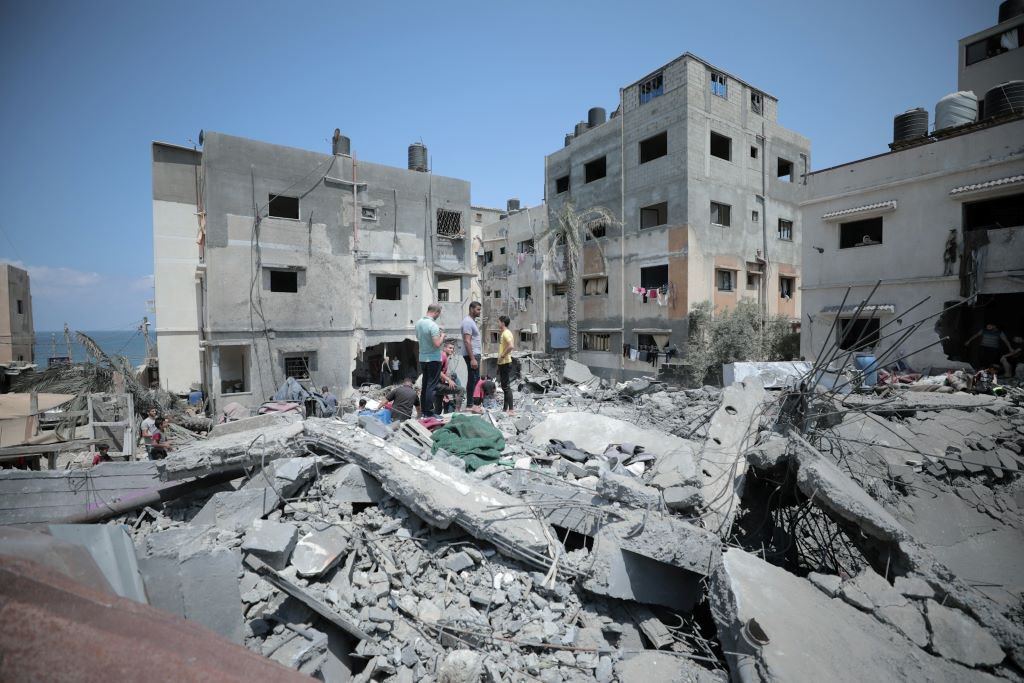International Healthcare Workers Report on War Related Injuries Among Civilians in Gaza
Findings suggest patterns of harm that exceed those reported in previous modern-day conflicts and provide critical insights to tailor humanitarian response

A British led study published by The BMJ provides detailed data on the pattern and severity of traumatic injuries and medical conditions seen by international healthcare workers deployed to Gaza during the ongoing military invasion.
Healthcare workers describe “unusually severe” traumatic injuries including complex blast injuries, firearm related injuries, and severe burns. Many respondents with previous experience of conflicts reported that the pattern and severity of injuries in Gaza were greater than those they had encountered in previous warzones.
It’s thought to be the first study to provide such detailed data from frontline clinicians during the conflict, which the authors say offers critical insights into the injuries and conditions most relevant to immediate management, rehabilitation, and long term health planning.
Since October 2023, Gaza has faced high intensity Israeli bombardment and ground military incursions. Publicly reported figures show that more than 59,000 Palestinians have been killed and over 143,000 wounded during the conflict, but other analyses suggest these figures may be higher.
To address this gap, healthcare workers were invited to take part in a survey about the nature and pattern of injuries and medical conditions they managed while in Gaza, ranging from explosive and firearm injuries to infections and chronic diseases.
A total of 78 doctors and nurses completed the survey using logbooks and shift records between August 2024 and February 2025, within 3 months of their deployment end date.
Participants represented 22 non-governmental organisations (NGOs) and were mainly from the US, Canada, the UK and European Union member states working in trauma surgery, emergency medicine, paediatrics, or critical care and anaesthesia.
Almost two thirds (65%) had prior experience working in an active conflict zone and their deployment to Gaza ranged from 2-12 weeks, contributing to a total of 322 weeks of frontline clinical care.
Overall, 23,726 trauma related injuries and 6,960 injuries related to weapons were reported. The most common traumas were burns (4,348, 18%), leg injuries (4,258, 18%), and arm injuries (3,534, 15%).
There were 742 obstetric cases reported, of which more than a third (36%) involved the death of the fetus, mother or both. Psychological trauma was also reported, with depression, acute stress reactions, and suicidal ideation being most common.
Some 70% of healthcare workers reported managing injuries across two or more anatomical regions and experiences of mass casualties were widespread, with 77% reporting exposure to 5-10 events and 18% managing more than 10 such scenarios.
Explosive injuries accounted for the majority of weapon related trauma (4,635, 67%), predominantly affecting the head (1,289, 28%) whereas firearm injuries targeted the legs (526, 23%).
The most common general medical conditions reported were malnutrition and dehydration, followed by sepsis and gastroenteritis. Healthcare workers also reported 4,188 people with chronic disease requiring long term treatment.
In free text responses, healthcare workers frequently described injuries as unusually severe, including multi-limb trauma, open skull fractures, and extensive injuries to internal organs. Severe burns were also emphasised, particularly in children.
Respondents with previous experience of deployment in other conflict zones commented that the severity and pattern of injuries encountered in Gaza were greater than those they had previously managed.
Despite the strength of this data, the authors acknowledge limitations. For instance, relying on logbooks and shift records inevitably introduces uncertainty, especially during periods of large influxes of injured people. Nor can they rule out the possibility of duplication, although further analyses indicated minimal impact on overall estimates.
However, they say the volume, distribution, and severity of injuries seem to indicate patterns of harm that exceed those reported in previous modern-day conflicts.
“These findings highlight the urgent need for resilient, context specific surveillance systems, designed to function amid sustained hostilities, resource scarcity, and intermittent telecommunications, to inform tailored surgical, medical, psychological, and rehabilitation interventions,” they conclude.
Source: BMJ Group




